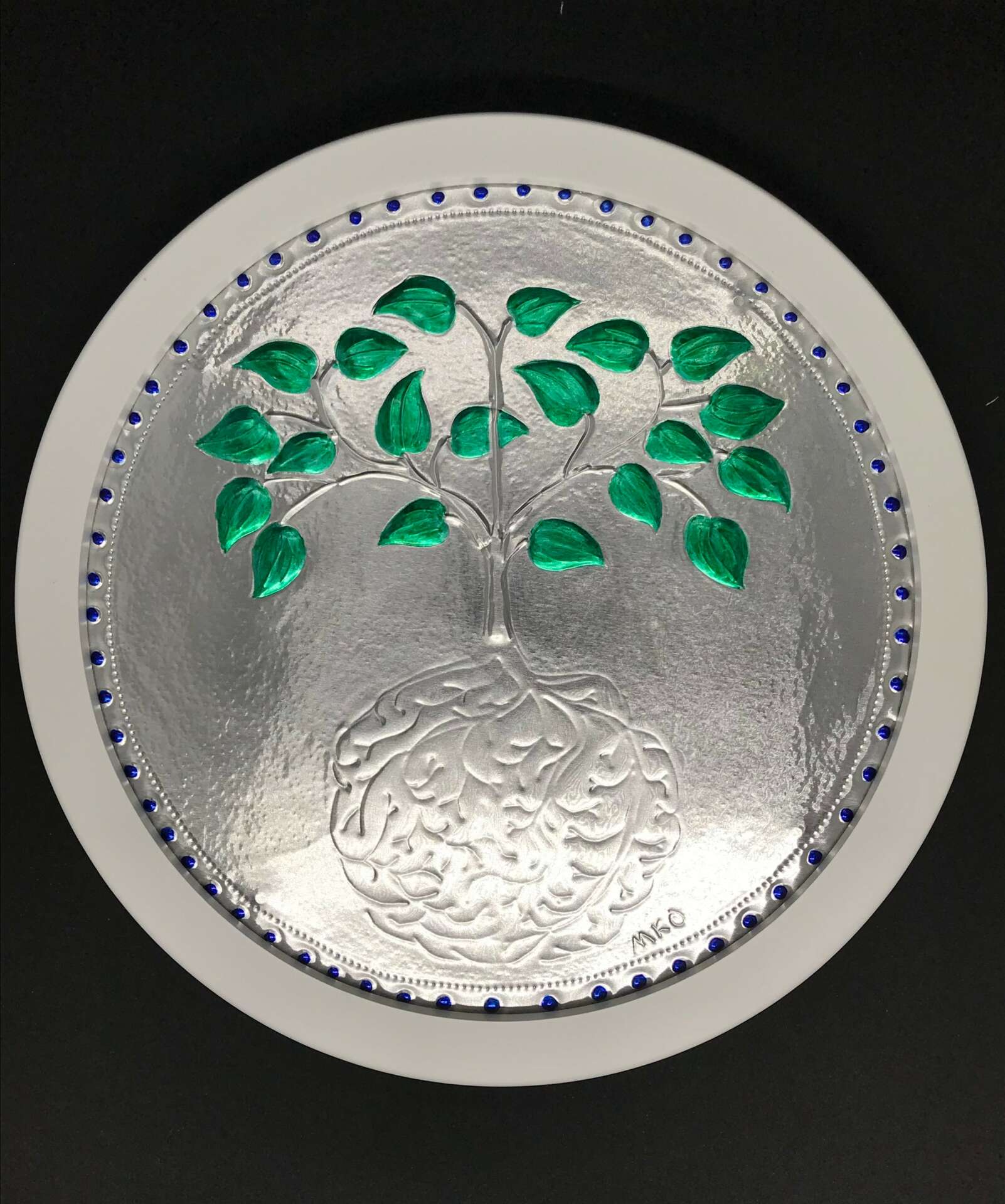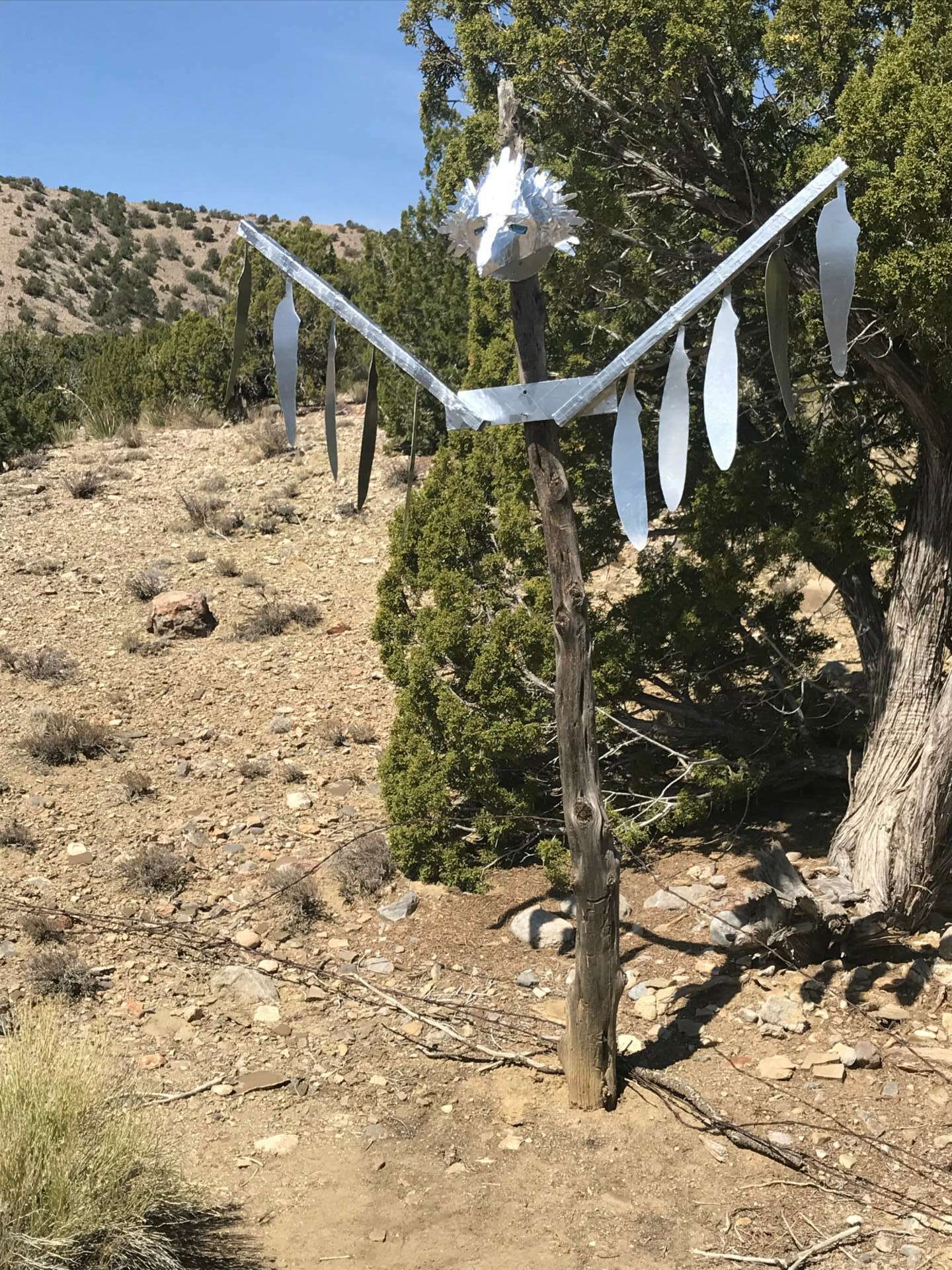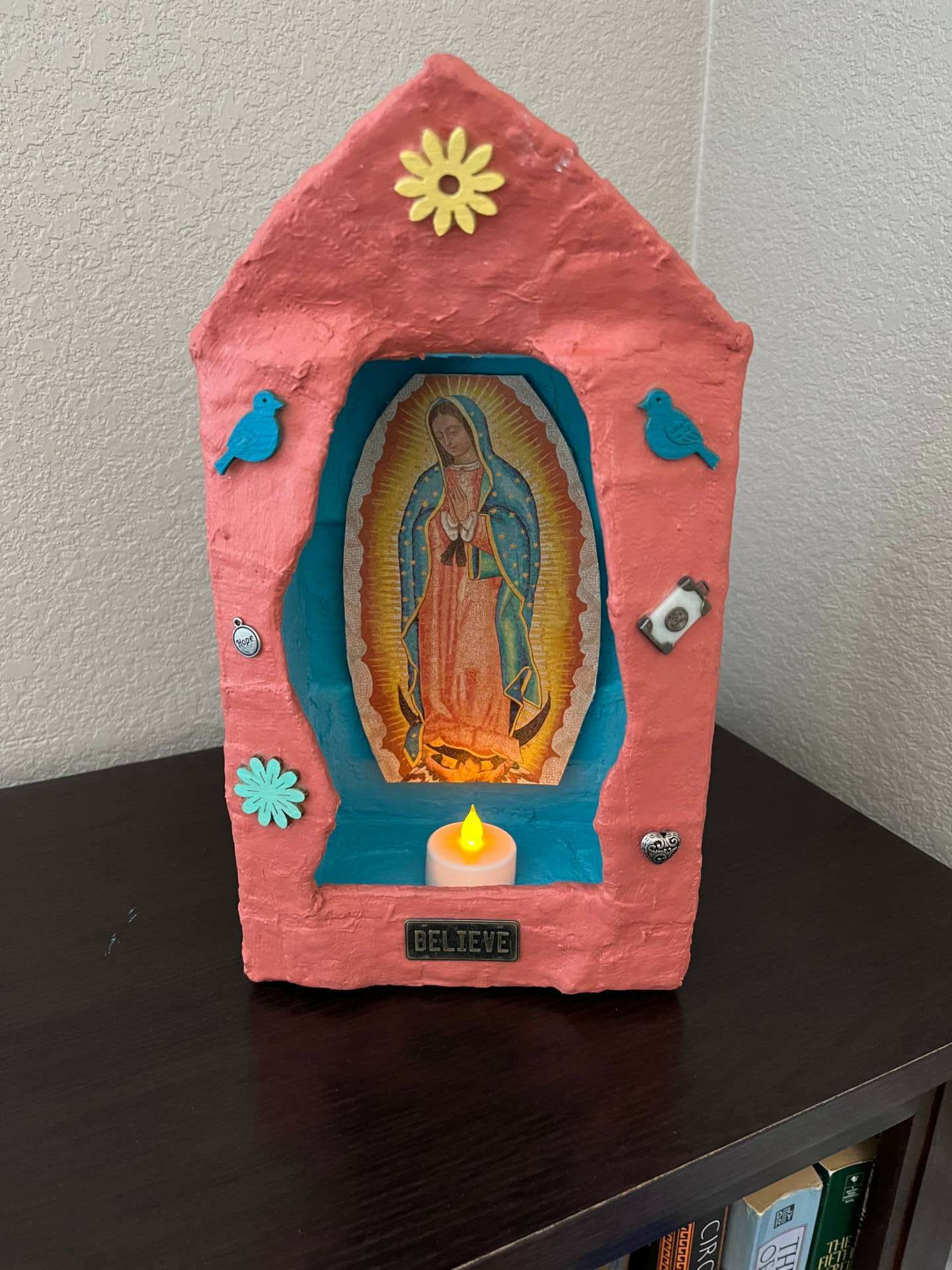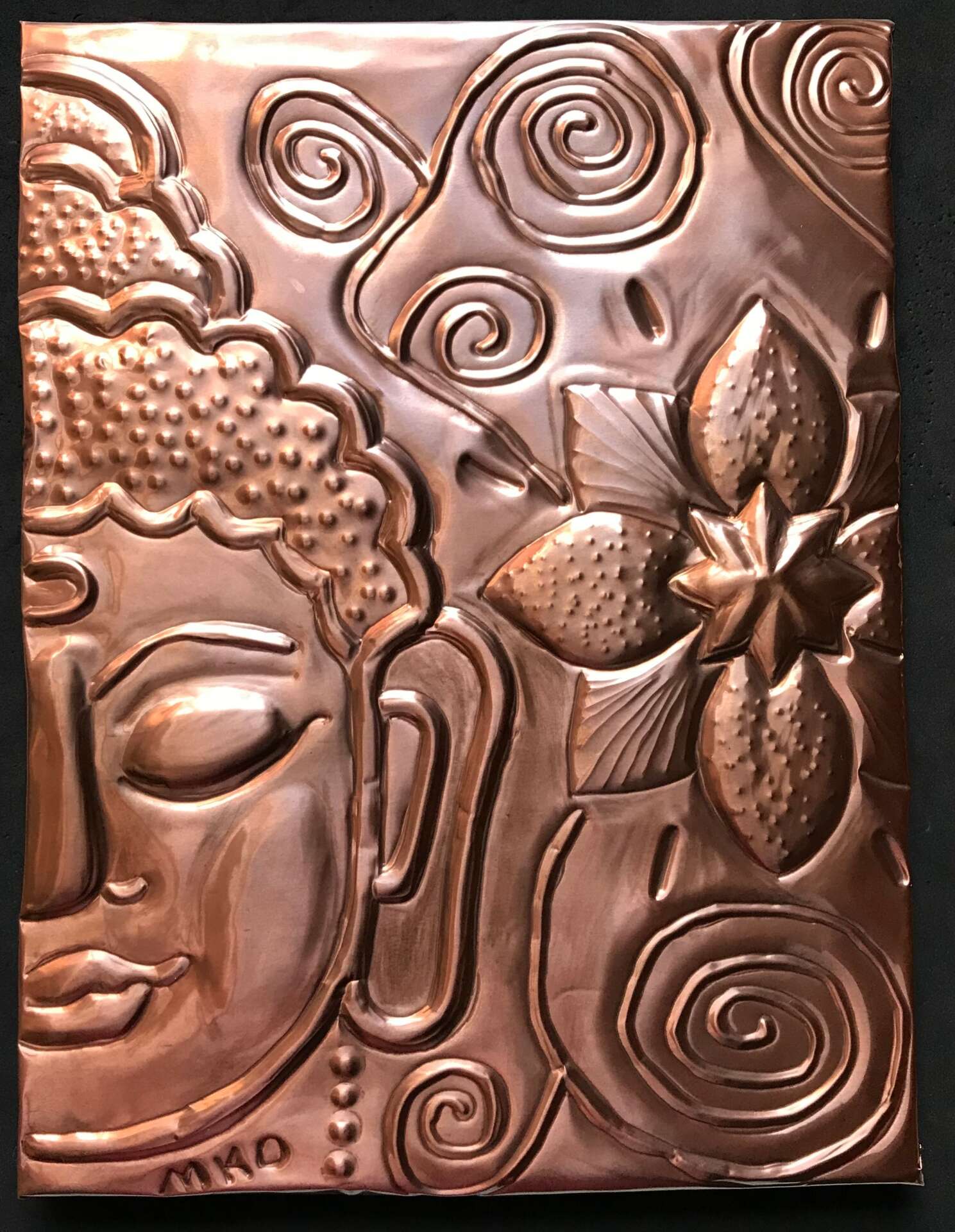We recently connected with Morgan O’Donnell and have shared our conversation below.
Hi Morgan, thanks for joining us today. We’d love to hear about a project that you’ve worked on that’s meant a lot to you.
The most meaningful project so far is one that I am currently working on, which I am tentatively calling The Menopause Art Project. This project proposal was submitted to and selected for the City of Albuquerque’s Urban Enhancement Trust Fund (UETF) 2022 Resiliency Residency program. Part of the project entails my own individual creative exploration of menopause. The other part is where I hope to work with the City and my partner nonprofit – Puha Hibaya – to put on exhibit of women artists on the theme of menopause.
In 2017 I left a job I felt was almost tailor made for me at a university I absolutely loved. While a big part of it was that it was not a good fit between me and my direct supervisor, another part of it was that I had started the journey of menopause, but I hadn’t really realized it. In 2018, after doing some contract work and consulting, I landed a job with a nonprofit. I was only there a short while before I began struggling again. Although I was also struggling with severe insomnia and night sweats at the time, I thought (again) the main reason was that it was not a good fit for me.
It wasn’t until after I left that I truly started exploring what was going on. I got a new doctor who listened to my concerns and we actually discussed menopause. She started me on HRT (hormone replacement therapy), which helped significantly with night sweats and sleep issues. Getting more quality sleep made a difference. I started asking more questions about menopause and exploring the topic.
When I discovered a company called Gennev was offering a 6 week, small group program on menopause, I jumped on it. It was a great program with lots of information and sharing among the group of different issues we encountered as well as solutions and ideas that we had tried. Our support group stayed together even after the formal program ended and we continue to share, including the increasing amount of articles that are now showing up in mainstream media.
I was reading headlines and things like these:
“1.3 Million Women Enter Menopause Each Year. We Have to Stop Ignoring Them” Glamour magazine from October 2020.
“Many Women Exit Workforce for a Little-Talked About Reason” Bloomberg from June 2021
And this snippet from the Harvard Business Review’s 2020 article titled “It’s Time to Start Talking About Menopause at Work:”
Excerpt – Menopause often intersects with a critical career stage. It usually
occurs between ages 45 and 55 – which is also the age bracket
during which women are most likely to move into top leadership
positions (technically 53.46 years old for a CEO). Since menopause
generally lasts between seven and 14 years, millions of
postmenopausal women are coming into management and top
leadership roles while experiencing mild to severe symptoms
such as depression, anxiety, sleep deprivation and cognitive
impairment, to name a few. A recent Korn Ferry analysis finds
that women hold only around 25% of C-suite positions. If we want
to continue to move the needle on the number of women in
leadership roles and maintain their valuable contributions to a
company’s bottom line, I believe we need to be more open about
what menopause is and how it affects both individuals and
organizations.
I realized that when I had left my position in higher education, it had several impacts. It impacted my career and retirement plans. The university experienced a loss of my knowledge, expertise, and the relationships I had built. I became concerned about how this impacts our society as whole.
I thought back to the first few doctors who I talked to about some of my symptoms and their solution was to offer me anxiety or antidepressants without really exploring what was going on (because that often seems to be the solution offered for many women’s health issues). Perimenopause and menopause were never even mentioned.
So far all of the examples I provided above might be considered the more negative aspects of the menopause journey. But there is a lot of freedom, empowerment, and new perspectives as well. Many women – like myself – experience increased creativity. There can be freedom from worrying about becoming pregnant. Women can find that they are no longer as concerned about what others or society as a whole thinks.
I believe that all aspects of menopause deserve to be explored and talked about.
When the City of Albuquerque put out a call for proposals for the Resiliency Residencies program, I saw an opportunity of how art could help raise awareness about this issue. From my experience teaching, I realized people are often more receptive to ideas when they are explored through creative avenues such as fiction and art. So I was thrilled when my proposal was one of the ones accepted.



Great, appreciate you sharing that with us. Before we ask you to share more of your insights, can you take a moment to introduce yourself and how you got to where you are today to our readers
Workwise, I’ve done many, many things over the years from serving in the military to working as a library assistant to coaching and consulting with nonprofit leadership. However, I spent the majority of my time in higher education in a variety of roles.
Prior to the pandemic, my creative outlet was writing. I started with poetry and founded my own small chapbook press in the days before there was print-on-demand. I also explored writing about sustainability and green issues. The type of writing I was focused on pre-COVID was humor.
Shortly after the pandemic hit, my mother passed away during the lockdowns and I was unable to attend her funeral. I found that my words were frozen. Trying to process her passing and the uncertainty of COVID lockdowns, I stumbled into art primarily using materials I could find around the house. In New Mexico, there are many shaman, spirit, and kachina sculptures and art. I was always drawn to them. One morning as I was on the edge of the property line I started looking at one of the old fence posts. I thought that maybe I could make a shaman sculpture out of it. Shortly after my first fence post shaman was born – Copper Shaman.
That seemed to unlock my creativity and I started exploring other areas including metal embossing. Originally I started by using the aluminum from soda cans, again because it was something already on hand. As I started reading more, watching videos, and experimenting I eventually started getting some real tools and using store-bought aluminum and copper.
I’ve always been drawn to metal sculpture. During Christmas my partner and I did a little loop around southeastern New Mexico and back. On the way back to Albuquerque from Las Cruces I discovered this large sculpture in the middle of the desert. It was Camino De Sueños by Greg Reiche. It captured my attention and I wanted to know how to make something like that, but I didn’t think this was something I could learn completely on my own from YouTube and reading. So I decided to take a shop class to learn about welding.
I loved welding! However, I realized a few things from the class. 1.) It takes a lot of chasing aka grinding to attempt to get the welds to look like what I envisioned! 2.) I don’t currently have the space or tools to practice this on my own, and 3.) that made me think about accessibility in art in regards to access to tools, knowledge, and affordability.
That led me to experimenting more with papier-mache and other similar materials. I love the accessibility of papier-mache because you can use cardboard. old newspapers, flour or glue, and your own hands. Contrast that with metal sculpting that requires welding gear, a space appropriate to welding, and the often more costly expense of metal. Additionally, I discovered that it was much easier to focus and get into that flow state when my hands were occupied. A bonus is that it makes it harder to reach for your phone when your hands are covered in goop!
Playing with papier-mache and plaster strips led me to making shrines. I use a variety of materials to make my shrines. One of the things I love to do with the shrines is to reuse different materials from cardboard boxes to found stones to tea tags with messages.
Right now I am primarily focused on metal embossing, papier-mache/plaster projects such as the shrines, and exploring mixed media and recycled art. Someday when I have more space and a different setup, I want to continue to explore creating metal sculpture with welding.
I started a website called Silver Raven Creations. While mostly it is for sharing my art at the moment, I hope to get it to a point where I can sell my art. I’ve also started looking and learning about Etsy. It’s all part of the learning experience (although I admit I enjoy learning art techniques much more than how to set up and run an Etsy shop). Right now, if someone sees something they are interested in either on my website or my Facebook page (also Silver Raven Creations), the best thing to do is contact me using the Contact page on the website or send me a message on the Facebook page.


What do you think is the goal or mission that drives your creative journey?
I would say one of my biggest goals is to create a way for me to earn a living from my art that works with my needs and my life. This is really important to me. After years of fitting myself into the standard work box, I want something different, healthier.
One of my other goals is similar to that of many artists I suspect and that is to create art, which brings hope to the world, sparks a moment of joy, or helps someone feel seen.
Can you share a story from your journey that illustrates your resilience?
Creating my third fence post sculpture – Silver Raven Shaman – was very challenging. Although it used the fence post like the others, I wanted it to have wings with moveable feathers and a head that looked like a raven. I had this vision, I had very little real knowledge of how to get there. Since it was outside, it also needed to be able to withstand the hot sun and windy season of New Mexico.
It took me well over a year of experimenting to get somewhere close to what I wanted it to be. I started with a small prototype, which I put outside to see how it responded to the elements. Often I would go on my morning walks only to discover that it had lost multiple feathers. I would go back to the drawing board, research, read articles, and try a new way to attach them. But I kept plugging away and eventually the number of feathers lost after a storm or high winds kept getting smaller and smaller.
Contact Info:
- Website: www.silverravencreations.com
- Facebook: https://www.facebook.com/SilverRavenCreations


